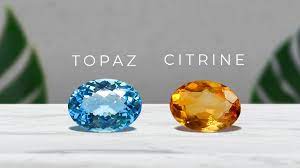June's birthstone is Alexandrite
May 09 2016 0 Comments Tags: alexandrite, birthstone
Alexandrite is a real treat of a gemstone: in different lights it undergoes an almost supernatural colour change. Depending on the chemical composition of the gemstone, Alexandrite tends to be a cool, bluish green in natural sunlight, but in incandescent (light bulb) light, the gem will appear to be an almost raspberry tone. The value of the gem depends on how distinct this colour change is. Indeed, the gem is so rare that a well-cut Alexandrite above one carat is one of the most expensive gemstones in the world, and worth more than fine ruby, emerald or sapphire.

Alexandrite was first discovered in 1834, in the Ural Mountains, and so the mythology that surrounds it is fairly new, in terms of gemstone histories. It is named after Tsar Alexander II, who came of age the day it was discovered. Red and green were the colours of Imperial Russia, so inevitably it became the official gemstone of the Empire.

The Tsar and the gemmologist: the men behind Alexandrite
Nowadays, the Ural mines are depleted, and Minas Gerais is the world's main source of Alexandrite, along with Tanzania, Sri Lanka, India, Burma, Madagascar and Zimbabwe.
As an incredibly rare gemstone, sourcing vintage Russian jewellery is one of the best ways to find Alexandrite. It also held particular fascination for Tiffany's George Frederick Kunz - a giant of gemmology who popularised semi-precious stones at the turn of the 19th and 20th centuries.

Its unique properties and hard-wearing nature make Alexandrite a particularly strong choice for an engagement ring
Alexandrite is a sophisticated stone, truly one for the connoisseur, given that its value and magic are not visible at first glance.
So, if you are thinking about purchasing this unique gem, what do you need to know? Here's a factfile:
Chemical: Chrysoberyl
Crystal System: Orthorhombic
Hardness: 8.5 on the Mohs scale
Refractive Index: 1.744 - 1.755
Cleavage: Distinct on {110}, imperfect on {010}, poor on {001}
Transparency: Transparent to Opaque
The value of Alexandrite is defined in accordance with the so-called "Four 'C's":
- Clarity refers to the transparency of the Alexandrite. With this criterion, it is comparable to ruby: clean faceted stones in sizes above one carat are rare and extremely rare in sizes above 2–3 carats.
- Colour is of paramount importance in grading Alexandrite. It is often considered on a percentage basis, with 100% being the perfect example of Alexandrite (of course, this is yet to be discovered!). In fact, a gem is often only considered to be Alexandrite from 30% upwards. Significant brown or grey inclusions (in either of its 'two colours') will have a negative impact on the stone's value.
- Carat refers to size, and of course, the bigger the stone is, the more expensive it will be! However, as mentioned above, faceted Alexandrite of any size is very valuable and in fact, very big Alexandrite (10 carats or larger) tends not to display a good colour change.
- The most common cuts of Alexandrite are cushions and ovals, but the stone can be found in almost any cut (if you look hard enough).
Alexandrite is a tough stone: warm soapy water is fine to clean it with, and ultrasonic and steam cleaners are generally safe too.
Enjoyed reading this? Find out more about birthstones and other gemstone facts on the blog!
0 comments






Leave a Comment